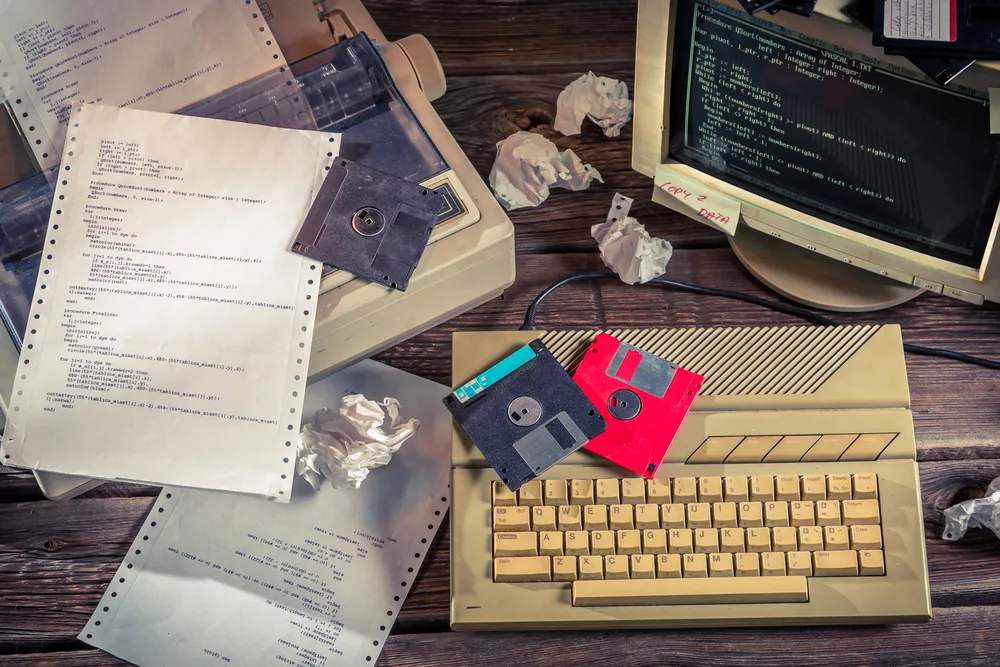We tend to be creatures of habit. We like to follow patterns that have worked for us in the past. Updating systems can be a big hassle and feel like more trouble than its worth. When considering a change, it can often prove to be very complicated. Daunting tasks tend to be put on the back burner or turned into the ultimate test of procrastination. Today we want to discuss why using Tax Section 179 matters when it comes to your business’s growth and success.
In the business world, procrastinating could be devastating, especially when it comes to your network. We live in an age where virtually all companies utilize technology. Even knowing this and seeing the benefits, technology tends to be the first thing put off when budgets get tight. If you consistently hold on to older technology, you could find yourself going the way of the dinosaurs.
The March of Progress Waits for No One
There are certain technologies you can use for a decade or more while others become outdated within weeks. Of course, how and when a technology becomes obsolete varies depending on a variety of factors. For the sake of this discussion, we will use two different terms: Functional obsolescence and absolute obsolescence.
Absolute Obsolescence occurs when it is physically impossible to use the technology. For instance, a computer without a modem or ethernet port would make connecting to the internet impossible. Utilizing a line of business application that runs solely off floppy disks also falls in this category.
Functional Obsolescence is a bit different. This is when something technically works but is not advisable. An example of this would be using Windows 7. Although you can still use it, there are many security holes that will leave you open to cyberattacks. When it comes to software, utilizing older software often limits its functionality. Think of trying to create a .docx file (current MS Word format) while using Word 97 (only capable of .doc). It’s like trying to get blood out of a stone.
Keep yourself informed about end dates. Be proactive with update schedules to make the prospect of upgrading less of a burden. Be aware of when certain parts of software will no longer be supported so that you can plan for a transition. When considering a big move to a new software, take the time to research the systems they support and how proactively they strive to make their software compatible with new technology. This will make normal operations significantly smoother, as well as ensure simple growth without falling into security or compatibility pitfalls later.
Perception is Everything
Besides the explicit risks of using obsolete technology, we need to consider perception. Using updated technology displays success and professionalism. Perception is worth its weight in gold when it works in our favor. In certain industries, there is massive competition between individual providers and customers can have very little reason to choose one over another, so this perception is critical.
There’s a reason why companies who invest in new technology often spend good money to advertise it to the public. Unless a potential customer is familiar with the expertise and reputation of your company, they rely on signals like your technology. Using noticeably out of date technology can leave a negative impression and make them think twice before doing business with you.
The Bottom Line
A generation ago, using computers was a luxury. However, that is no longer the case. From web designers to lumberjacks, just about every industry requires technology to some extent. Instead of trying to fight it, proper planning and implementation can make this fact of life work in your favor. Tax Section 179 was created to help make this need more profitable for your business.
Consider it time to plan a yearly technology plan or replacement cycle. Since everyone is in the same boat, there are plenty of options to accommodate every company’s needs. Subscription services have become an immensely popular option for software, making sure that users always have the most current versions. For those that have an idea of how often they need to replace their hardware, Hardware as a Service (HaaS) programs may be your best bet. You pay monthly or yearly for not only maintenance but also for the eventual replacement at a set interval, taking the guesswork out of upgrades.
But when it comes down to it, much like the rest of life and business, balance is key. You shouldn’t make new technology your center of focus, but try not to be stubborn about upgrading, either. Remember, while you may be comfortable with what you have, there’s still plenty of value in what’s new and fresh. Make sure you know what you should be updating, and use Tax Section 179 to make it a double advantage for your company.

